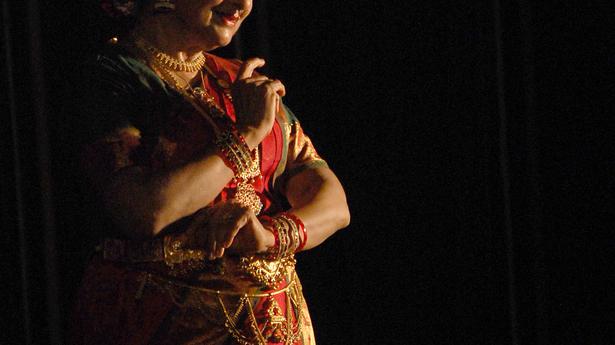
Padma Subrahmanyam’s unified vision of art
The Hindu
Padma Subrahmanyam talks about how her distinct style of Bharata Nrityam is influenced by Sadir, regional forms, languages, history, architecture, and of course, the Natya Shastra
In the clamour of divisive narratives vying for attention in today’s India, Padma Subrahmanyam represents a unified vision. As the veteran dancer-scholar’s institution Nrithyodaya celebrates its 80th anniversary from August 5, she can command the longshot perspective, not merely in terms of her decades of experience in the arts but also because of her early introduction to the idea of India. The theme of Nrithyodaya’s anniversary is ‘80 celebrates 75’, a reference to the 75th anniversary of India’s Independence and a doff of the cap to the institution’s founder, freedom fighter and film director K. Subramanyam, Padma’s father. She reminds us that her father’s 1939 feature film
Padma Subrahmanyam, whose life’s work has been dedicated to research and performance of the classical dance and literature of India, with special focus on the Natya Shastra, steadfastly steers away from a discussion of today’s politics and where modern India might have deviated from the ideals of the freedom fighters, saying, “As a dance historian I often separate myself from my own work.” However, her work does exemplify a holistic vision and an acceptance of intermingled streams.
“My work can be understood as a revival of a common grammar of dance and drama. Because this is what the Natya Shastra gives us. It was a common grammar not only at a pan-Indian level, but more than 25 years ago, I recognised it as pan-Asian.”
The Marga, or movement grammar described in the Natya Shastra, which she resurrected as part of her research, is the link between all the Desi-s (regional forms), she notes, just as Sanskrit is the link between various languages, and here she includes even Tamil, which is commonly accepted as a part of the Dravidian family not related to Sanskrit.
“I am not someone who thinks there is an iron curtain between Sanskrit and Tamil,” she remarks with reference to the high emotions generated by the language debate. Politics apart, what is the connection between these two languages?
“I am not a linguist. I am not a philologist to give you a precise answer for this. From my experience of studying Sanskrit literature and Tamil literature I am able to see a lot of parallels. I cannot believe that Tamil has nothing to do with Sanskrit. Sanskrit was the lingua franca, nobody denies that. Which is older is not my problem. Both are beautiful old languages, which had a lot of give and take. Sanskrit, if I understand properly, is a language named because of the concept of sanskriti, refinement. So it was developed consciously by the intellectual prowess of the rishis, and great poets like Kalidasa, since Vedic Sanskrit is different from Kalidasa’s Sanskrit. In the same way, Tamil has evolved in 2,000 years. If someone speaks in Sangam Tamil, you’re not going to understand that as Tamil at all.”
She adds, “My mother composed a few hundred songs in both Sanskrit and Tamil. So I am able to see an extraordinary link between the two and I do not believe in the (Aryan-Dravidian) race theory.”

 Run 3 Space | Play Space Running Game
Run 3 Space | Play Space Running Game Traffic Jam 3D | Online Racing Game
Traffic Jam 3D | Online Racing Game Duck Hunt | Play Old Classic Game
Duck Hunt | Play Old Classic Game











